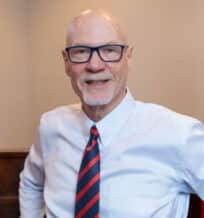
Pedestrians are particularly vulnerable to suffering severe and fatal injuries in traffic-related accidents. Unlike motorists, who are protected by safety features such as seat belts, airbags, and the steel cage of their car, pedestrians take the full force of impact in a crash.
Even if a vehicle isn’t traveling at a particularly high speed when the accident occurs, pedestrians can still sustain fatal or life-altering injuries. According to data from the Centers for Disease Control and Prevention, nearly 6,000 pedestrians died in traffic-related accidents across the country in a recent year. Put another way, one pedestrian died every 88 minutes. Approximately 137,000 pedestrians got treatment in emergency departments for nonfatal injuries sustained in traffic-related accidents that same year.
If you were seriously injured or lost a loved one in a pedestrian accident in Central Florida, reach out to Brooks Law Group today for a free consultation. We can help you pursue compensation from the at-fault party for your losses, including medical bills, lost wages, pain and suffering, and more. Contact us today to get started.
Where Do Most Pedestrian Fatalities Occur?
Most pedestrian fatalities happen at night, in non-intersection areas, and in urban environments. According to a recent report by Smart Growth America, Florida is considered the most dangerous state for pedestrians. Over a 10-year study period, Florida saw 5,893 pedestrian fatalities.
Pedestrians hit by cars are more likely to suffer catastrophic injuries that ultimately prove fatal, such as traumatic brain injuries, spinal cord injuries, and internal trauma.
Who’s At Fault? The Pedestrian or the Driver?
Many people believe that pedestrians always have the right of way. Not true. In some cases, pedestrians may bear responsibility for the crash. For example, if pedestrians attempt to cross an intersection in violation of a traffic signal, they could be held fully or partly liable for a wreck. Florida law spells out pedestrian obligations here.
Other times, the driver may be liable for a pedestrian’s injuries. Suppose a driver fails to yield the right of way to a pedestrian when the pedestrian is permitted to cross an intersection or is distracted and slams into a jogger. In that case, they could be legally responsible in a pedestrian accident lawsuit.
It’s also worth noting that Florida is a pure comparative negligence state, which means that even if you were 99 percent at fault for an accident, you could still recover 1 percent of losses from the other at-fault party.
How to Prevent Pedestrian Accidents in Florida
Consider following these pedestrian safety tips to help prevent accidents:
- Ensure that you are visible. If you are walking at night, wear reflective gear or vests so that motorists can clearly see you.
- Only cross streets at designated crosswalks when possible.
- If a sidewalk is available, use the sidewalk instead of walking on the roadway. If you must walk on the road, stay on the far-left shoulder of a road in the direction of oncoming traffic.
- Don’t walk while distracted. Don’t have your eyes glued to a cell phone or other electronic device while walking near the road.
- Make safe decisions if you’ve been drinking. Walking is a safer option than driving. But if you’re intoxicated, consider using public transportation or rideshare services to get to your destination safely since your balance and judgment could be impaired.
Contact a Pedestrian Accident Attorney at Brooks Law Group Today
Were you injured in a pedestrian accident in Florida? Or did you lose a beloved family member due to someone else’s negligence? Don’t hesitate to get the knowledgeable help you need. Contact Brooks Law Group today for a free case review.













